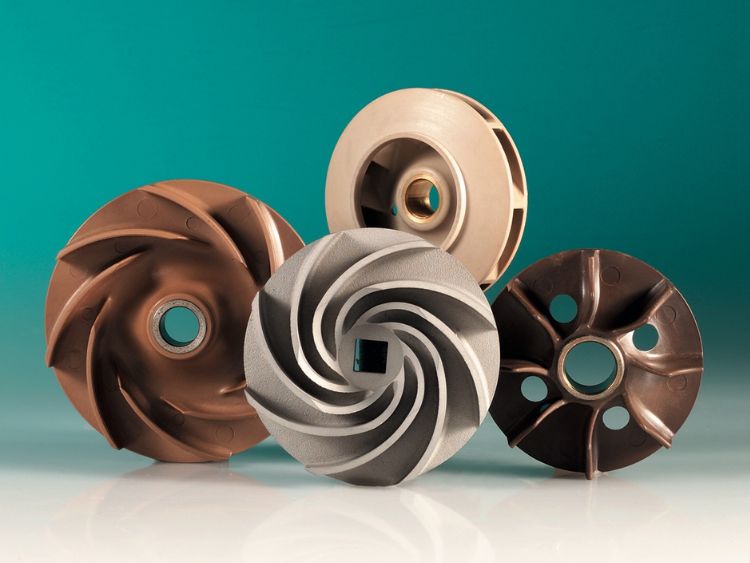What are pump impellers
Welcome to the dynamic world of centrifugal pump impellers, where science and engineering come together to create the invisible motor that drives so many mechanical drive systems. Pump impellers are fundamental rotating elements in pumping equipment. Components designed to transform mechanical energy into fluid energy, ensuring the proper functioning of pumps and the movement of liquids.
The importance of pump impellers
Without efficient impellers, pumps could not perform their task of transferring liquids or gases from one point to another. Impellers are the core of any pump system, ensuring optimal performance and reliability over time. The quality of pump impellers is crucial to avoid problems such as cavitation, corrosion and premature wear.
How they work
Pump impellers work by converting mechanical energy into fluid energy. The impellers’ vanes produce a pressure difference between the front and back of the impeller, creating fluid flow. The shape and angle of the vanes are the key parameters for the impeller’s performance and its ability to generate effective thrust.
Let’s discover together the hidden secrets of these essential components and their impact on pump performance.
Vane shape and angle
Imagine the vanes of an impeller as the wings of an aircraft, carefully and precisely designed to generate the thrust needed to get the fluid off the ground. The angle and shape of the vanes are like the secret geometries that determine the fluid dynamic flight of the impeller, directly influencing the flow rate and efficiency of the pump.
Flow rate, head and NPSHR
By navigating the waters of flow rate, head and NPSHR, mechanical engineers chart the ideal course to ensure smooth operation. The right combination of parameters is like a perfect symphony that leads to operational success. Ah, what does NPSHR mean? It stands for Net Positive Suction Head. It basically outlines the net positive suction head of a pump. In other words, quoting Wikipedia, ‘it is the difference between the pressure at a specific point in a hydraulic circuit and the vapour pressure of the liquid at the same point’.
Pump characteristic curve
In the labyrinth of characteristic curves lies the secret of performance. By observing the head trend in relation to the flow rate, engineers can plot the optimal path to maximise energy efficiency and ensure smooth operation of the centrifugal pump.
Record-breaking performance
Like an athlete on the track, the performance of a centrifugal pump is a measure of its power and agility. Optimum efficiency is like crossing the finish line in record time, transforming mechanical energy into kinetic energy with skill and precision.
Fluid dynamics in action
Immersed in the mysterious fluid, centrifugal pump impellers dance with elegance and power, transforming rotational energy into a controlled and powerful flow. A fluid-dynamic ballet that brings mechanical machines to life.
Complicated?
Nah. We at C.A. Stampi make it easy:
we design the impeller in co-design with our customer, design and manufacture the mould and all the necessary equipment to produce it, and finally we take care of the mass production of the complete impellers.
